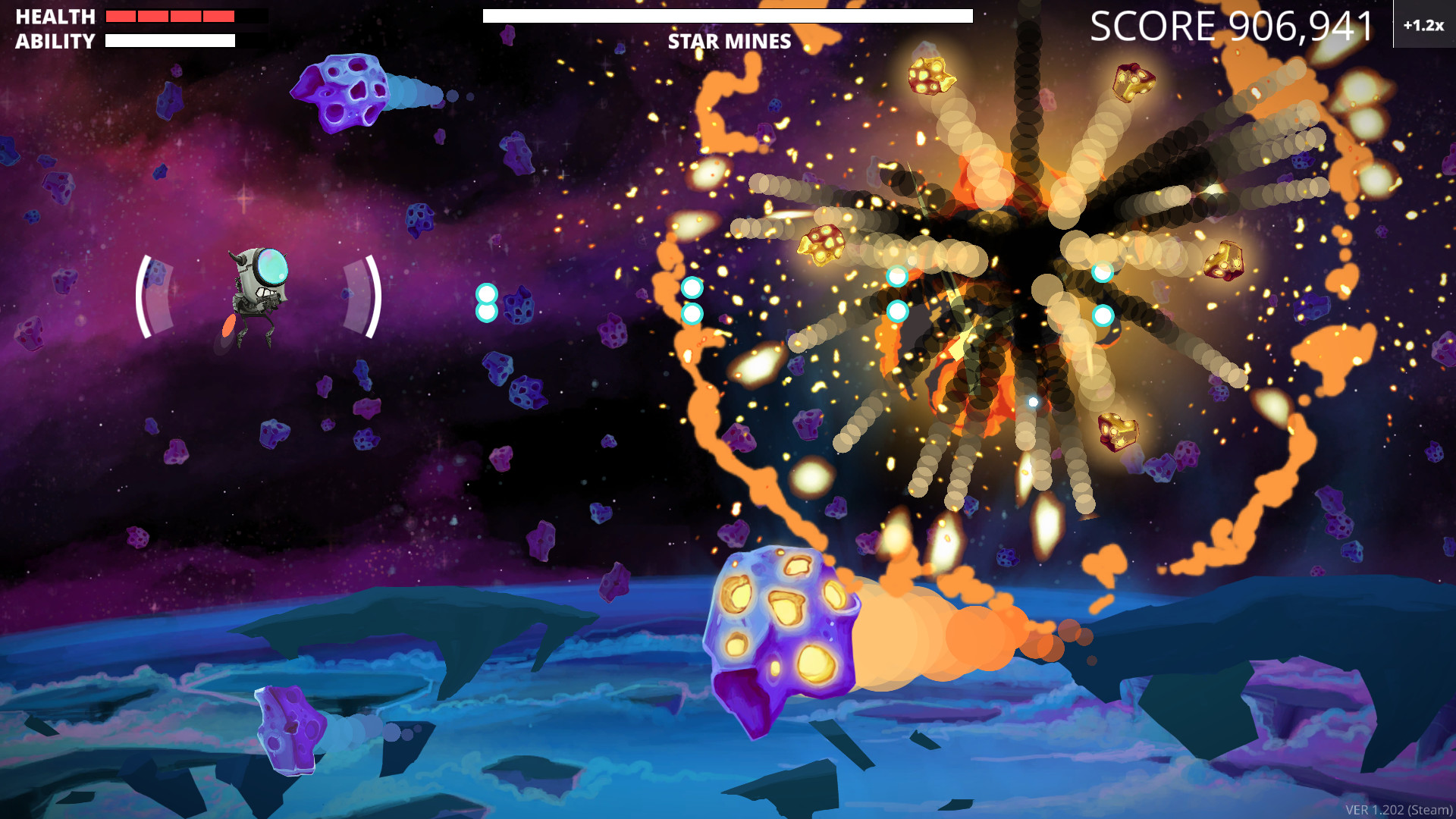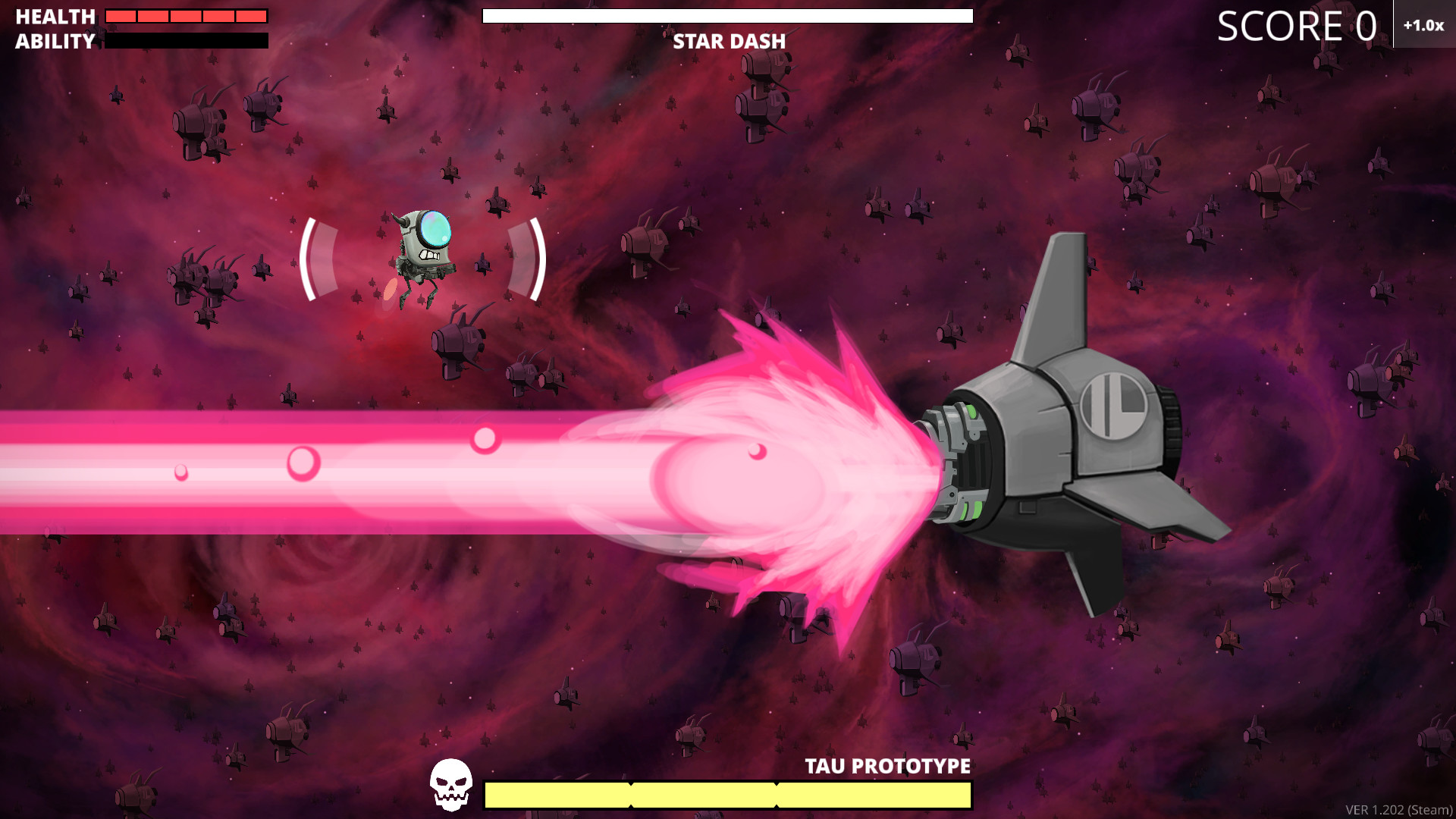Search
[{{{type}}}] {{{reason}}}
{{/data.error.root_cause}}{{{_source.title}}} {{#_source.showPrice}} {{{_source.displayPrice}}} {{/_source.showPrice}}
{{#_source.showLink}} {{/_source.showLink}} {{#_source.showDate}}{{{_source.displayDate}}}
{{/_source.showDate}}{{{_source.description}}}
{{#_source.additionalInfo}}{{#_source.additionalFields}} {{#title}} {{{label}}}: {{{title}}} {{/title}} {{/_source.additionalFields}}
{{/_source.additionalInfo}}Legacy of the Elder Star (PC)

Legacy of the Elder Star
Developed By: Kickbomb Entertainment
Released: June 7, 2016
Available On: Windows, Mac, Linux
Genre: Side-scrolling Shooter
Number of Players: 1
Price: $14.99
Thanks to Kickbomb Entertainment for sending us a review copy!
The Elder Star at the center of the universe has died. A mob of countless synthetics known as the Infinite Legion has ripped out its heart and split it into four, looking to end the organic life the star supports. However, even in death, the Elder Star is not defenseless. As the universe faces its greatest threat, the long-slumbering Cosmonaut awakens, set to wage a one-robot war on the Infinite Legion to re-forge the Elder Star’s core and save all that lives.
Legacy of the Elder Star is a side-scrolling shooter that sets itself apart through its control scheme and difficulty style. The player character, Cosmonaut, is controlled entirely through the mouse: moving the mouse moves Cosmonaut; left clicking activates your primary attack; right clicking uses your secondary attack, which uses a limited but constantly recharging ammunition meter; and clicking both at once fires your special attack, which charges as you defeat enemies. In addition, the Z, X, and space bar keys can be used in lieu of left, right, and double clicking. Perhaps best of all, the mouse wheel changes the sensitivity of your mouse, speeding up and slowing down Cosmonaut on the fly to suit your preferences. The control you have over Cosmonaut is extensive, and is central to making the game work as well as it does.
The difficulty of Legacy of the Elder Star, rather than prepackaged modes or scaling enemies to your performance, is entirely score-based. Cosmonaut can take five hits before exploding, with extra hits granted every 20 million points, but you always continue where you left off; death only resets your score multiplier, which constantly raises the longer you stay alive. In essence, this allows you to limp through the whole story the first few times, showing you each of the five stages’ enemy layout and boss attacks – the former is randomly generated each time you play, but somewhat limited to a few sets per level. While this sets up a base that’s a bit more repetitive than other shooting games, it gives a clear focus on offense rather than defense.

Strong Points: Smooth, responsive gameplay; excellent visuals and music
Weak Points: Some balance issues with the different weapons; a few sound effects clash with the aesthetic
Moral Warnings: Robot-on-robot violence
As you get more familiar with the game, the true risk-reward system shines through. You gain bonuses for defeating enemies up close, for grazing or capturing bullets, and for fulfilling special conditions like destroying 90% of all enemies or never burning out your secondary weapon. Once you get familiar with the stages and enemy types, you’ll naturally start pushing the envelope, disregarding safety in search of higher scores. Combined with the responsive controls, your score is tied to your skill and experience, and serves as a rewarding memento to your progress.
All three attacks come in three varieties, unlocked as you play through the story mode, and have significantly different properties. You can freely mix-and-match between the weapons you have, but are locked into your choice once the game starts. While no weapon is useless, there is always one per set that is noticeably more powerful and is all but required for high scores. The third primary weapon can be charged before firing, which not only gives you the close-range bonus but captures all enemy bullets it hits. Likewise, while all secondary attacks award bonuses on kills, the final one simply has much more potential than the other two, though at the cost of being harder to master and giving no invincibility while in use. The second special weapon, a giant laser beam, seems much more useful than the other two due to its speed, uptime, and areal coverage. That’s not to say that the other weapons aren’t effective or fun to use, but don’t expect to put up huge scores with them.
Along with the weapons, three additional game modes are unlocked as you beat the story: Practice, Challenge, and Gauntlet. Practice mode lets you choose a single story mode stage to play through. Challenge gives you a new randomly-generated level per day and limits you to a specific weapon loadout; you can play as many times as you want to put up the best score you can before the day is out. Gauntlet is a boss rush; you must destroy every boss in the game on a single life, with bonus points awarded based on how fast you beat each enemy. Both Challenge and Gauntlet offer an enjoyable break from the main story mode, and Challenge specifically tests your skill and relieves the aforementioned balance issues through its strict weapon choices.
The game’s presentation could hardly be better. The story is functionally a footnote, but the opening and closing cutscenes lend themselves well to the game's overall style. The load times are snappy, and in-game slowdown is non-existent. The art direction is top notch, being both pleasing to look at and informative to the player: the characters stand out against the backgrounds, and important elements, such as bullets or Cosmonaut’s hitbox, are bright reds and blues that stand out against everything else. The music is very well done, with most tracks sampling the surprisingly-catchy main theme, and is one of the highlights of the whole game.

Higher is better
(10/10 is perfect)
Game Score - 94%
Gameplay - 18/20
Graphics - 10/10
Sound - 9.5/10
Stability - 4.5/5
Controls - 5/5
Morality Score - 93%
Violence - 6.5/10
Language - 10/10
Sexual Content - 10/10
Occult/Supernatural - 10/10
Cultural/Moral/Ethical - 10/10
The only flaw lies in the sound effects, and even then only a subset of them: while the rest of the game is retro-styled but undeniably modern, the explosions and bonus point sound effects are NES-type 8-bit boops and bleeps that clash against the established aesthetic. Even then, however, they convey important messages to the player by standing out, mainly acknowledging when you’ve obtained a bonus or when a boss has moved on to its next stage, so even its only real fault is barely a problem.
The game syncs your scores to its online leaderboards, encouraging some amount of competition. Unfortunately, there are only a few dozen other scores at most at the time of writing, and hardly anyone plays the daily Challenge mode, so most of your opposition will have to be yourself. It’s worth mentioning that there was one instance of the game not taking my score – which, of course, happened to be the best score I ever achieved – but it only happened once, and could very well have been a Steam or general internet issue.
As a shooting game, violence is the main attraction. However, the only living beings in the game are some background foliage; all the action is contained to robots shooting robots. There is little morally objectionable in the game at all, and is safe for all ages to play.
If you’re looking for a score attack shooting game to play, Legacy of the Elder Star is certainly worth a look. Tight controls, great design, and fantastic presentation make it worth the price of admission, even before considering the nigh-endless replayability. Accessible to both beginners and experts, and good for a quick story mode run or a longer session, Legacy of the Elder Star is a solid addition to any library.
-Cadogan








